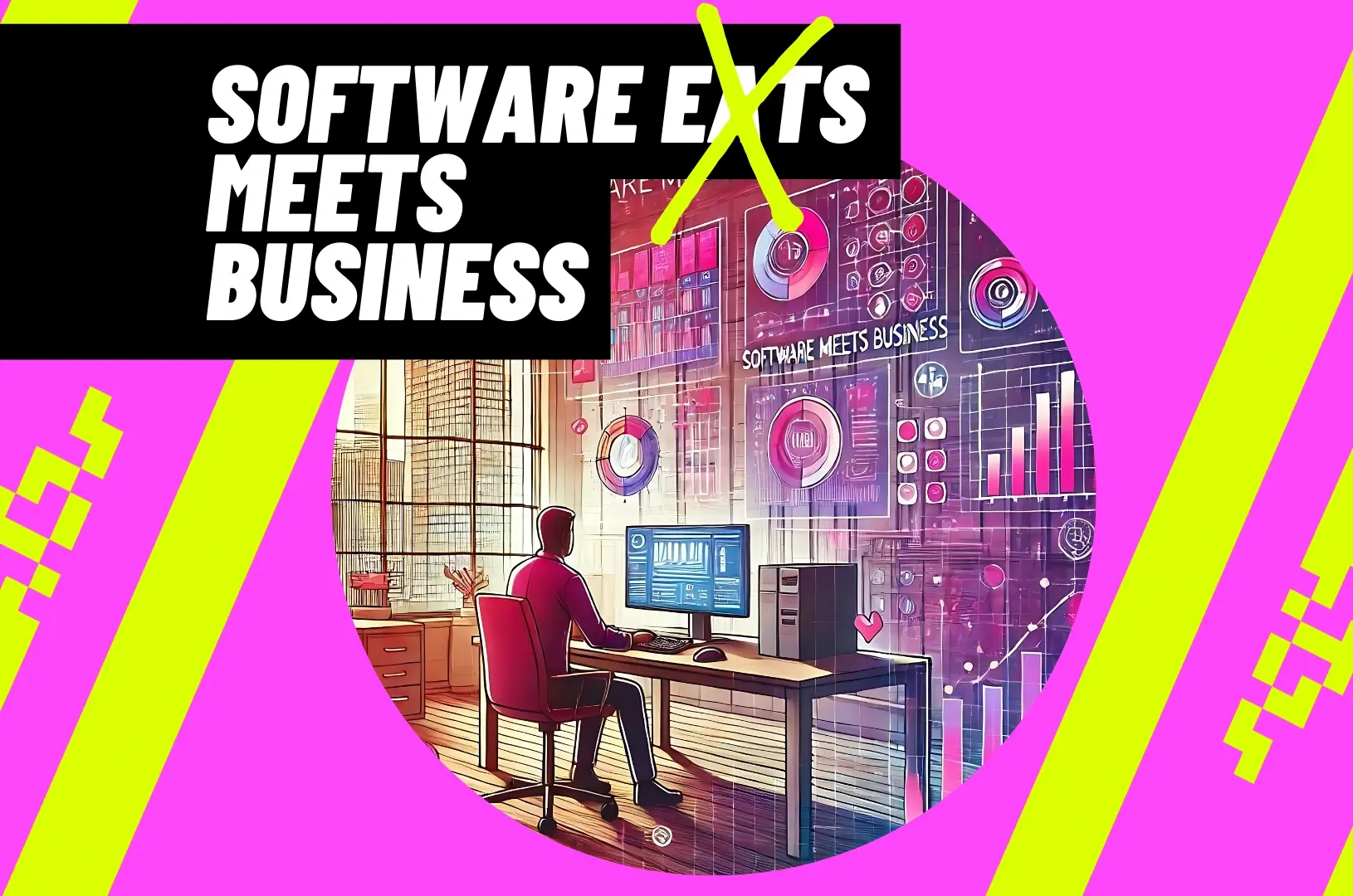
How Mark Doyle Built an Immersive Healthcare Experience with 'A Life in a Day - E2
Join us as we talk to Mark Doyle, co-founder of A Life in a Day, who transformed his journey from theatre into creating a cutting-edge, immersive healthcare simulation.
In this episode, we explore how Mark and his team used software to create a 24-hour experience that helps healthcare professionals truly understand life with chronic diseases. Discover the challenges, triumphs, and innovations behind this impactful project.
[00:00:10]
Rich: Welcome to another episode of Software Meets Business. Today, I’m thrilled to have with me Mark Doyle, co-founder of A Life in a Day. Hi Mark!
Mark: Hey Rich, how are you doing?
Rich: Good, good. I’m really excited to have you here because you’ve built an incredibly successful product using software developers. I’d love to start by understanding your journey and how you got to where you are today.
[00:01:00]
Mark: Thanks for having me. Reflecting on this journey has been fascinating. To start from the beginning, I definitely didn’t plan to get into software. I actually started my professional career as an actor. I worked with a theatre company and had a film company with my business partner, John, who’s a writer and director. Around the early 2000s, we realised that while the creative work was wonderful, it would be nice to monetise it. So, we set up a business using our creative expertise to create immersive learning experiences.
[00:01:33]
Rich: Was that teaching people to be immersive, or something else?
Mark: It was broader than that. The first company we set up, The Method, used actors’ techniques to help people communicate more effectively in business. The approach was always immersive—focused on interactivity and learning through doing. When we started, we had no business experience, no product, and no clients—just a vague sense that we could create something meaningful. Over time, we carved out a niche, particularly in training and development for the pharmaceutical sector, where companies invest heavily in personal development. In 2015, one of our clients challenged us to develop a simulation that allowed people to experience what it’s like to live with a specific condition for 24 hours. The first condition we worked on was Crohn’s disease.
[00:03:51]
Rich: What was that initial project like?
Mark: The brief was to create an immersive, 24-hour simulation. Participants would wake up and be guided through the experience using an interactive app, live role play, and physical props. For example, the app sends prompts and challenges throughout the day, while actors call participants in the roles of doctors, nurses, or even bosses. We also send a kit of items like medical props and wearables to simulate sensations. By the end of the day, participants behave, think, and feel more like a patient.
[00:05:23]
Rich: It’s fascinating. Most people wouldn’t think there’s a need for this, but it makes sense that pharmaceutical companies need to connect with the people behind the conditions they’re trying to treat.
Mark: Exactly. Historically, the healthcare sector focused on treating diseases, not people. But over the last 10–20 years, and especially during COVID, there’s been a shift toward understanding the human side of healthcare.
[00:06:28]
Rich: You were initially involved to write the challenges. How did that evolve into building software?
Mark: At first, we were just creating the role play and challenges. But when we saw how well the program worked, we thought, Why not expand this to other conditions? The client wasn’t interested in building beyond Crohn’s disease, so we reached an agreement to take the concept and build it ourselves. At that point, we had to create our own app from scratch because the existing app was owned by them.
[00:08:00]
Rich: Did you know at that point that you needed a software development partner?
Mark: Yes, because I’d been adjacent to the development of the original app. I knew enough to realise that we needed an external partner, but not enough to know how to choose one effectively. My brief to Head Channel in 2018 was simple: Create software that is entirely editable by the writing team without needing developers to make changes. I needed something that could be updated instantly.
[00:09:53]
Rich: How did you choose Head Channel?
Mark: It was through a recommendation. We sent the brief to three companies, and Head Channel stood out because of their strong response, competitive pricing, and the fact that I liked the team.
[00:11:00]
Rich: When you had your initial meeting, what was the gap between your expectations and reality?
Mark: It was massive. I realised how much I misunderstood the complexity of what we were asking for. For example, I didn’t fully communicate that this app wasn’t something you use repeatedly—it’s a live, 24-hour event. We also needed a single app that could serve multiple conditions through a customisable backend. That level of complexity only became clear after we started the discussions.
[00:15:00]
Rich: Once you engaged Head Channel, was it an iterative process or a big reveal?
Mark: We didn’t really have the vocabulary at the time to ask for an iterative process. After a few months, we saw an early version, and it looked great visually, but the functionality wasn’t there. There were significant gaps between what I envisioned and how it was interpreted.
[00:16:54]
Rich: Did you hit your six-month deadline?
Mark: No. The biggest issue was getting approval on the App Store. We ended up using TestFlight for the first pilot, which worked fine because it was a small-scale test. The Head Channel team worked incredibly hard to get us to that point.
[00:20:00]
Rich: What happened after the first version was delivered?
Mark: I thought we’d finish the project in six to eight months, but in reality, it took three to four years to fully realise the original vision. Even now, the software is constantly evolving.
[00:24:31]
Rich: What’s changed in your ways of working since then?
Mark: One big change was moving from fixed-price upgrades to a time-and-licenses model. Initially, I resisted this, but it gave us much more transparency and improved communication. We’ve also brought in a fractional CTO, which has been invaluable. They help us analyse technical proposals and ask the right questions.
[00:28:42]
Rich: What’s next for A Life in a Day?
Mark: We’re excited about exploring AI to enhance the platform, but ultimately, the focus is on continuing to evolve the product in partnership with Head Channel. I used to think we’d bring development in-house, but now I see the value in maintaining a strong external partnership.
[00:31:12]
Rich: Mark, it’s been fantastic having you on the podcast. I’m sure your insights will help others who are embarking on their software development journeys.
Mark: Thanks, Rich. It’s been great reflecting on how far we’ve come.

Contact us.
If you need a partner in software development, we're here to help you.
We will respond to your enquiry immediately.